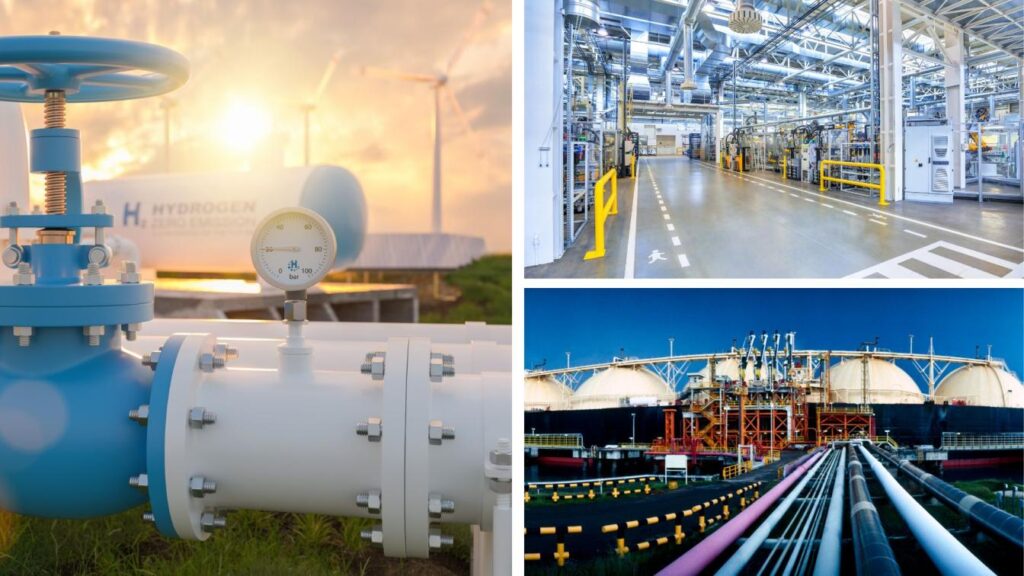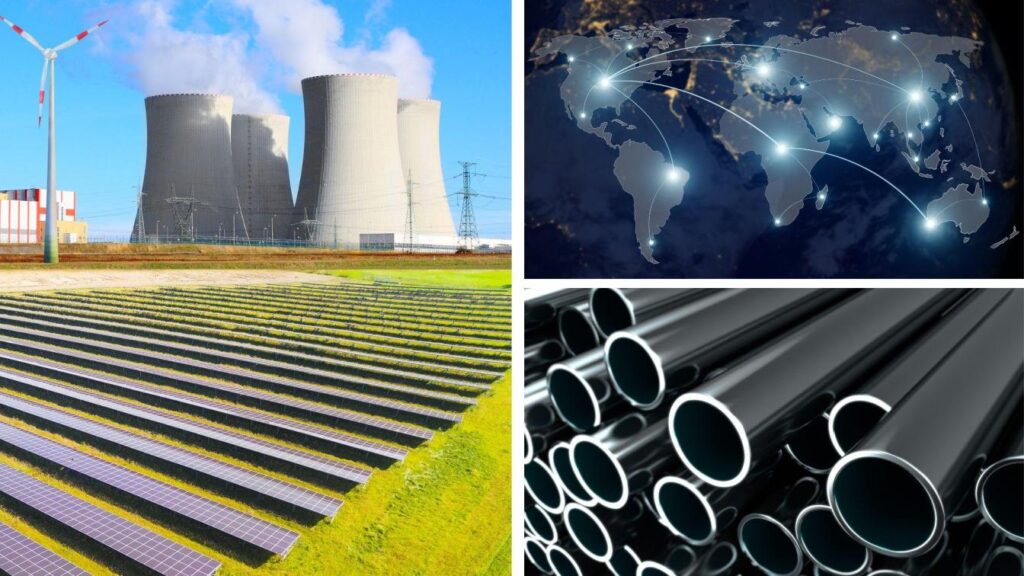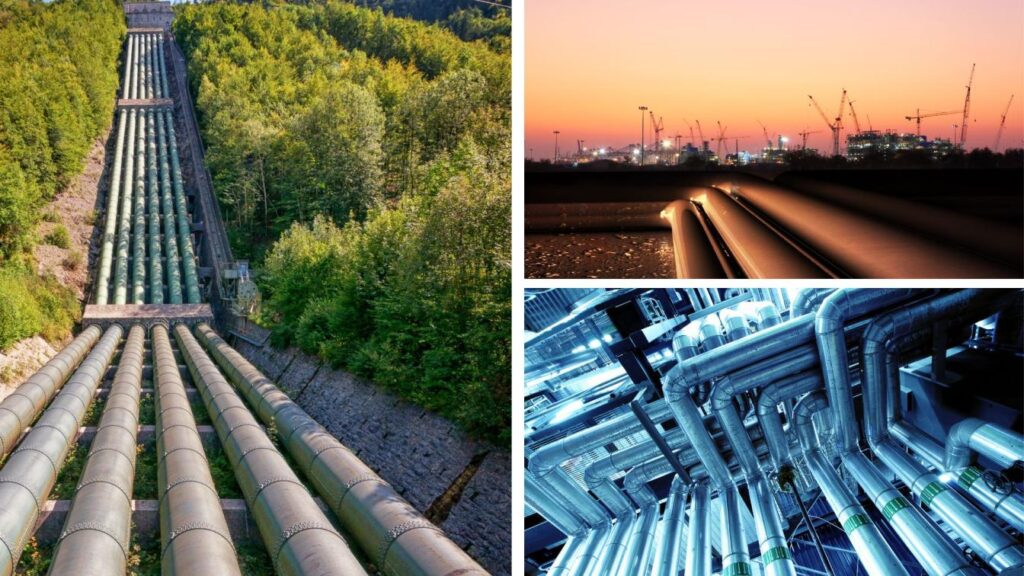The presence of hydrogen sulfide (H₂S) in pipeline systems poses one of the most significant challenges in the oil, gas, and industrial sectors today. Let’s dive deep into understanding this critical issue and explore how innovative solutions are reshaping the future of pipeline infrastructure.
Understanding H₂S Corrosion in Steel Pipelines
When H₂S meets steel pipelines, it creates a perfect storm of corrosive conditions that can compromise pipeline integrity. The simultaneous presence of H₂S and CO₂ in produced fluids creates an extremely aggressive environment, leading to severe corrosion of mild steel. This corrosion mechanism is particularly concerning because it affects critical infrastructure across multiple industries.
The Chemistry Behind the Threat
The corrosion process begins when H₂S dissolves in water, creating a complex series of chemical reactions:
- H₂S gas dissolves in water
- The dissolved H₂S dissociates into corrosive ions
- These ions react with the steel surface
- Iron sulfide films form on the pipe walls
Key Factors Affecting H₂S Corrosion:
- Gas composition and concentration
- Temperature variations
- Flow effects
- Solution composition
- Time exposure
- Iron sulfide scale formation
Temperature’s Critical Role
Temperature plays a fascinating dual role in H₂S corrosion. At lower temperatures, corrosion rates can actually increase as protective films struggle to form properly. However, at higher temperatures (around 90°C), iron sulfide films can become more protective in nature. This temperature-dependent behavior creates unique challenges for pipeline operators.
The Triple Threat of H₂S Corrosion
H₂S corrosion manifests in three primary forms that pipeline operators must guard against:
Hydrogen-Induced Cracking (HIC)
This insidious form of damage occurs without external stress, developing through hydrogen atom penetration into the steel structure. HIC particularly affects:
- Pipeline steel base material
- Weld zones
- Areas with high inclusion density
Sulfide Stress Corrosion Cracking (SSCC)
SSCC represents a more aggressive form of damage, characterized by:
- Rapid crack propagation
- Sudden failure potential
- Higher risk in medium and high-strength steels
Stress-Oriented Hydrogen-Induced Cracking (SOHIC)
This complex form of corrosion combines elements of both HIC and SSCC, creating particularly challenging failure modes in pipeline systems3.
| Corrosion Type | Primary Cause | Risk Factors | Impact Severity |
|---|---|---|---|
| HIC | Hydrogen diffusion | Material defects | Moderate to High |
| SSCC | Tensile stress + H₂S | High strength steel | Very High |
| SOHIC | Combined stresses | Multiple factors | Extreme |
This comprehensive understanding of H₂S corrosion mechanisms sets the stage for exploring innovative solutions that can protect pipeline infrastructure and ensure long-term operational success. Visit Nexa Pipe to learn more about cutting-edge solutions for these critical challenges.
The True Cost of H₂S Corrosion
Think of H₂S corrosion as a silent budget-drainer. You might not see it happening, but it’s constantly eating away at both your infrastructure and your bottom line. The numbers are staggering – the global cost of corrosion reaches into billions annually, with H₂S-related issues taking a significant chunk of that pie.
Breaking Down the Financial Impact
Direct Costs:
- Equipment replacement
- Emergency repairs
- Production downtime
- Safety incident management
- Environmental cleanup
Hidden Costs:
- Increased insurance premiums
- Regulatory compliance expenses
- Lost business opportunities
- Reputation damage
- Legal liabilities
Real-World Consequences
Let’s put this into perspective. A single pipeline failure can trigger a domino effect of problems:
Production Losses
Picture this: One day of unexpected downtime can cost millions in lost production. That’s like throwing money down a corroded pipe!
Safety Concerns
H₂S isn’t just tough on pipes – it’s dangerous for people too. A leak can create serious safety hazards, leading to:
| Risk Level | Potential Impact | Response Required |
|---|---|---|
| Low | Minor leaks, local effects | Regular monitoring |
| Medium | Equipment damage, possible injuries | Immediate maintenance |
| High | Major failures, severe safety risks | Emergency shutdown |
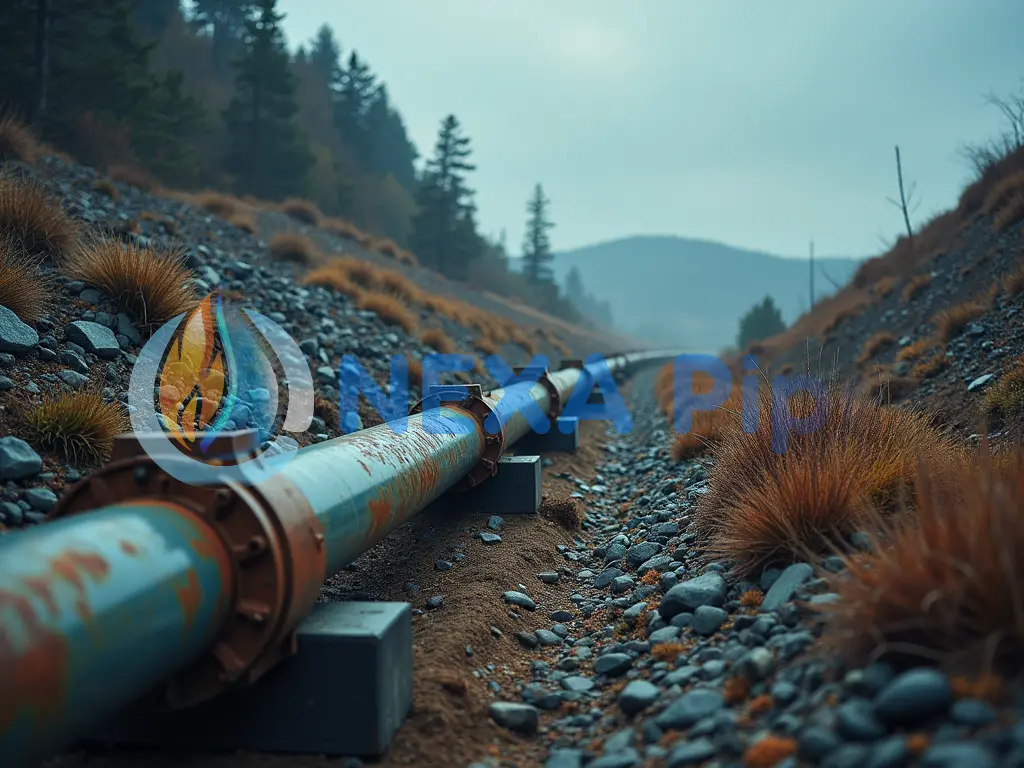
The Prevention Premium
Here’s where things get interesting. You might think preventing H₂S corrosion is expensive. But compare these numbers:
Reactive Approach:
- Emergency repairs
- Production losses
- Safety incidents
- Environmental fines
Proactive Solutions:
- Planned maintenance
- Modern materials
- Monitoring systems
- Staff training
The math is simple: prevention beats cure, every time.
Industry Evolution
The pipeline industry isn’t standing still. Innovation drives progress, and that’s where Nexa Pipe shines. Their cutting-edge solutions represent a quantum leap in corrosion prevention technology.
Modern Solutions for Modern Challenges
Think of Nexa Pipe’s technology as your pipeline’s suit of armor. It’s not just about fighting corrosion – it’s about preventing it from starting in the first place. Their innovative manufacturing processes create pipes that laugh in the face of H₂S.
Smart Investment Strategy
You wouldn’t build a house on sand, so why risk your pipeline infrastructure with outdated materials? Nexa Pipe’s solutions might seem like a bigger investment upfront, but they’re actually your ticket to long-term savings. Their state-of-the-art pipe production facility churns out products that set new standards in corrosion resistance.
Looking Ahead
The future of pipeline infrastructure isn’t just about surviving H₂S – it’s about thriving despite it. With green energy initiatives gaining momentum, the need for reliable, corrosion-resistant pipelines has never been greater. Remember: every dollar spent on prevention saves multiple dollars in potential repairs. That’s not just smart business – it’s essential for survival in today’s competitive market.
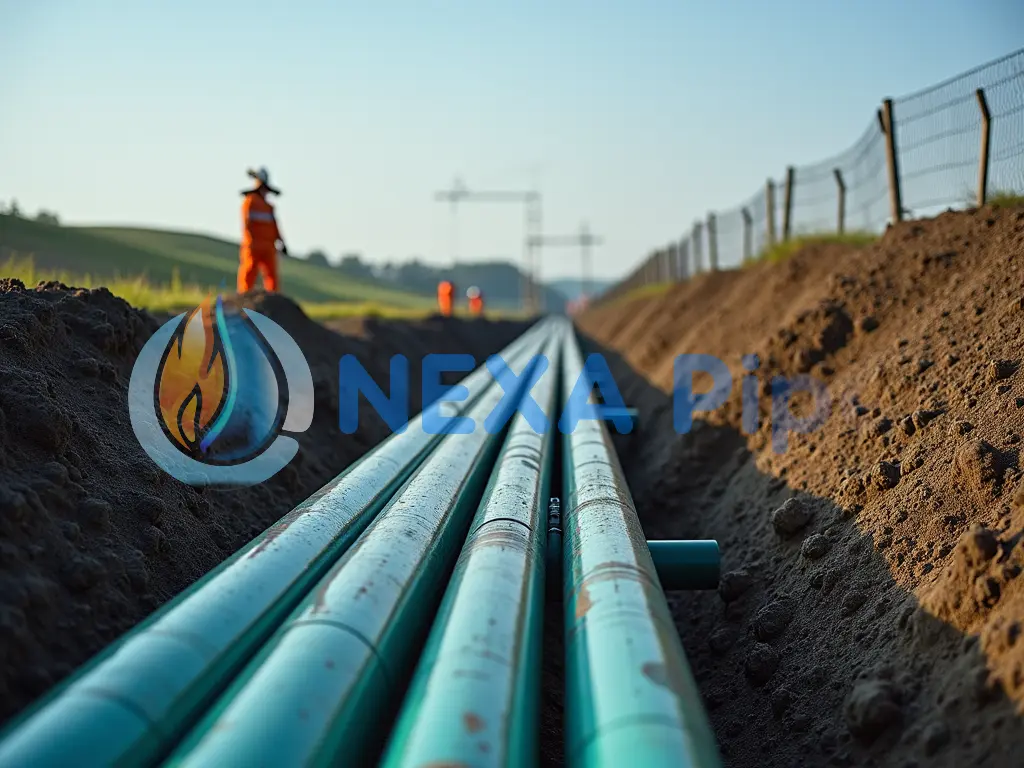
Breaking Down the Solution: Why Traditional Methods Fall Short
Ever wondered why your old pipeline solutions just aren’t cutting it anymore? Let’s chat about that. You see, traditional pipeline materials have served us well, but they’re fighting a losing battle against H₂S. Think of it like using a paper umbrella in a thunderstorm – it might work for a minute, but you’ll end up soaked!
The Evolution of Pipeline Protection
Remember when carbon steel was the go-to solution for everything? Those days are behind us. You’ll find cutting-edge solutions that completely transform how we think about pipeline protection. It’s like comparing a horse-drawn carriage to a Tesla – both will get you there, but one’s clearly built for the future.
Revolutionary Manufacturing Approaches
Here’s something exciting – modern manufacturing techniques have completely changed the game. Whether you’re dealing with a new installation or upgrading existing infrastructure, you’ve got options that weren’t even imaginable a decade ago. Key Manufacturing Innovations:
- Smart material composition
- Advanced coating technologies
- Precision engineering
- Quality control automation
The Smart Money Choice
Let’s talk numbers. You might think, “Hey, my current pipeline’s still working.” But here’s the kicker – prevention costs pennies compared to repair dollars. Check out this comparison:
| Aspect | Traditional Solutions | Modern Solutions |
|---|---|---|
| Initial Cost | Lower | Moderate |
| Maintenance Frequency | High | Minimal |
| Lifespan | 5-10 years | 20+ years |
| Downtime Risk | Significant | Minimal |
| Environmental Impact | High | Low |
Revolutionizing Pipeline Rehabilitation
When it comes to fixing existing pipelines, you’re in for a treat. Modern relining solutions are like giving your old pipeline a suit of armor. Quick, effective, and surprisingly cost-efficient!
Green Energy Ready
Looking toward the future? The renewable energy sector demands specialized solutions. Whether you’re handling hydrogen transport or geothermal applications, you need pipelines that can take the heat – literally and figuratively! Future-Proof Features:
- Hydrogen-compatible materials
- Enhanced pressure resistance
- Temperature fluctuation tolerance
- Superior chemical resistance
Making the Smart Choice
Think about it – would you rather:
- Keep patching up problems as they arise?
- Or invest in a solution that stands the test of time?
It’s like choosing between constantly repairing an old car or investing in a reliable new one. Sometimes, the smarter choice is crystal clear.
Real-World Performance
Want to know what makes these solutions special? Here’s the scoop:
- Seamless integration with existing systems
- Minimal disruption during installation
- Proven track record in harsh environments
- Outstanding longevity
You’re not just buying a pipe – you’re investing in peace of mind. When H₂S threatens your operations, you need solutions that work as hard as you do. Modern pipeline protection isn’t just about surviving; it’s about thriving in challenging conditions.
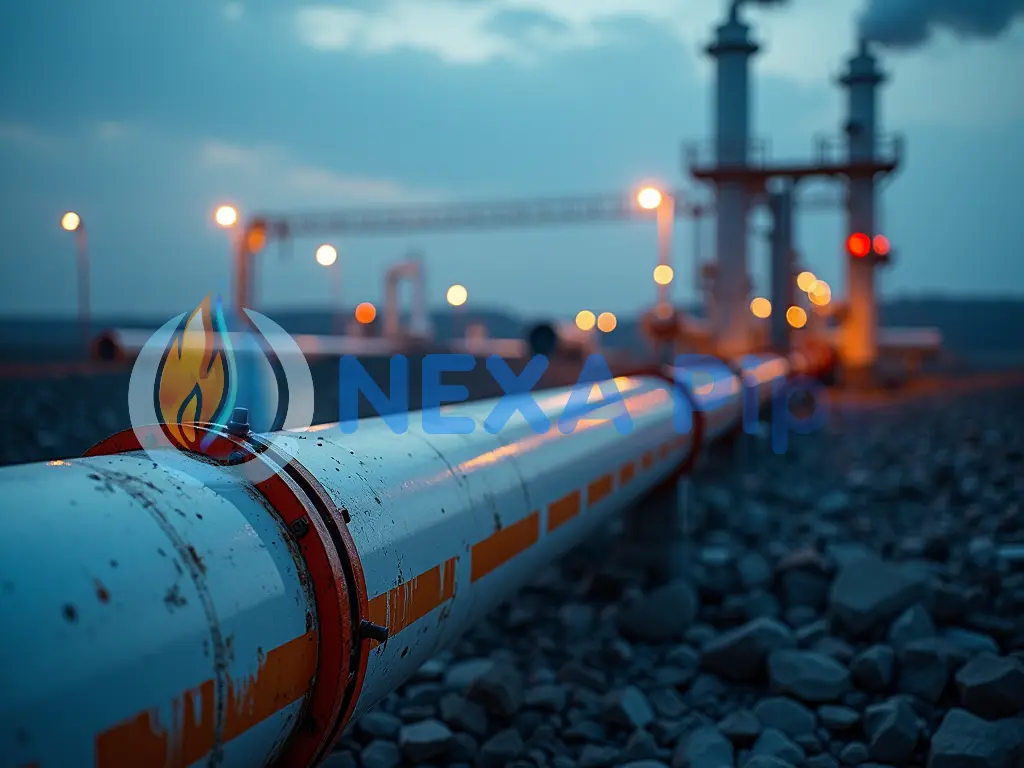
Detection and Monitoring: Your First Line of Defense
Let’s talk about catching problems before they catch you! Modern detection systems are like having a super-powered early warning system for your pipelines. Pretty cool, right?
Smart Monitoring Technologies
Gone are the days of crossing your fingers and hoping for the best. Today’s monitoring systems pack quite a punch: Real-Time Monitoring Features:
- Continuous H₂S level tracking
- Pressure fluctuation alerts
- Temperature monitoring
- Corrosion rate analysis
- Flow pattern assessment
Think of it as having a 24/7 health monitor for your pipeline. It’s like having a doctor constantly checking your pulse!
The Science of Prevention
Check out these critical H₂S concentration thresholds:
| Concentration (ppm) | Risk Level | Required Action |
|---|---|---|
| 0-10 | Low | Regular monitoring |
| 10-50 | Moderate | Enhanced surveillance |
| 50-100 | High | Immediate attention |
| 100+ | Severe | Emergency protocols |
Early Warning Signs
You wouldn’t ignore your car’s check engine light, would you? Here are the pipeline equivalent of warning lights:
- Unexpected pressure drops
- Unusual flow patterns
- Temperature anomalies
- Coating deterioration signs
- pH level changes
Advanced Protection Systems
Modern protection isn’t just about stronger materials. It’s a whole system working together! Here’s what makes it tick:
Multi-Layer Defense
Picture your pipeline protection like a medieval castle’s defense system: Outer Layer:
- Advanced external coatings
- Environmental barriers
- Impact protection
Middle Layer:
- Composite reinforcement
- Stress distribution systems
- Chemical resistant barriers
Inner Layer:
- Surface treatments
- Anti-corrosion linings
- Smart monitoring sensors
Smart Material Selection
Not all materials are created equal. The right choice depends on:
- Operating conditions
- H₂S concentration levels
- Temperature ranges
- Pressure requirements
- Environmental factors
Maintenance Strategies That Work
Want to know the secret to pipeline longevity? It’s all about smart maintenance. Here’s what you need to know:
Proactive Maintenance Schedule
Think of it as a spa day for your pipeline:
- Regular inspections
- Preventive treatments
- Performance optimization
- System updates
- Documentation and tracking
Emergency Response Planning
Hope for the best, plan for the worst! A solid emergency plan includes:
- Clear response protocols
- Trained response teams
- Equipment redundancy
- Communication systems
- Recovery procedures
The pipeline industry is evolving faster than ever. Smart technologies, better materials, and innovative solutions are changing the game. It’s not just about fixing problems anymore – it’s about preventing them before they start.
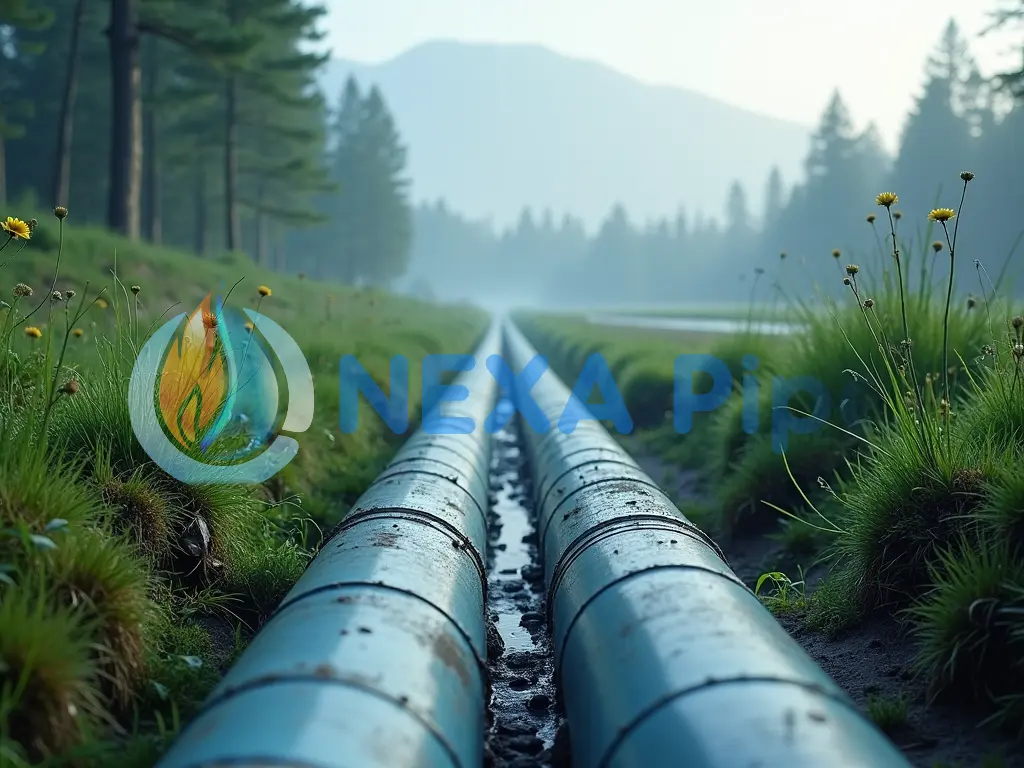
Environmental Impact and Sustainability
Let’s get real about environmental responsibility. You care about the planet, and so do we! Modern pipeline solutions aren’t just about preventing corrosion – they’re about protecting our environment too.
The Green Revolution in Pipeline Technology
Think of modern pipelines as environmental guardians. They’re not just carrying materials; they’re protecting our ecosystems. Here’s what makes them special: Environmental Benefits:
- Reduced carbon footprint
- Minimal soil contamination risk
- Lower maintenance-related emissions
- Sustainable material usage
- Extended lifecycle impact
Regulatory Compliance and Safety Standards
Global Standards at a Glance
Let’s break down what matters in the world of compliance:
| Region | Key Standards | Focus Areas |
|---|---|---|
| North America | NACE/ASTM | Material integrity |
| Europe | EN/ISO | Safety protocols |
| Asia Pacific | API/ASME | Performance metrics |
| Global | Combined | Best practices |
Safety First, Always
You wouldn’t skydive without a parachute, right? The same goes for pipeline safety: Critical Safety Features:
- Automated shutdown systems
- Pressure relief mechanisms
- Leak detection technology
- Emergency response integration
- Remote monitoring capabilities
Cost-Benefit Analysis
Let’s crunch some numbers! Modern solutions might seem pricey upfront, but they’re worth their weight in gold.
Long-Term Value Proposition
Investment Benefits:
- Reduced maintenance costs
- Lower insurance premiums
- Fewer emergency repairs
- Extended service life
- Enhanced operational efficiency
ROI Timeline
Picture this: Your pipeline investment is like planting a money tree. Here’s how it grows: Year 1-2:
- Initial system optimization
- Staff training benefits
- Early problem prevention
Years 3-5:
- Maintenance savings kick in
- Reduced downtime impact
- Performance improvements
Years 5+:
- Maximum ROI realization
- Competitive advantage
- Market leadership position
Industry Applications
Different industries, different needs – but one solution fits all! Check out how modern pipeline solutions work across sectors:
Oil and Gas
- High-pressure environments
- Extreme temperature variations
- Aggressive chemical exposure
Chemical Processing
- Corrosive material handling
- Complex fluid dynamics
- Strict safety requirements
Power Generation
- Steam handling capabilities
- Temperature cycling resistance
- Long-term reliability needs
Future-Proofing Your Investment
The future’s bright, and your pipeline should be ready for it! Modern solutions aren’t just about today – they’re about tomorrow too.
Adaptability Features
- Modular design options
- Upgrade compatibility
- Scalable solutions
- Technology integration ready
- Future regulation compliance
Installation and Implementation Strategies
Ready to revolutionize your pipeline system? Let’s dive into the nuts and bolts of making it happen! Installing modern pipeline solutions is like conducting an orchestra – every element needs to play its part perfectly.
Pre-Installation Planning
Before you jump in, let’s get your ducks in a row: Site Assessment Checklist:
- Environmental conditions
- Soil composition analysis
- Access point evaluation
- Equipment requirements
- Resource allocation
Smart Installation Approaches
Think of installation like building with high-tech LEGO blocks. Each piece matters, and the assembly sequence is crucial.
| Phase | Key Activities | Duration |
|---|---|---|
| Planning | Site prep, resource gathering | 1-2 weeks |
| Implementation | Installation, testing | 2-4 weeks |
| Verification | Quality checks, certification | 1 week |
| Optimization | Fine-tuning, monitoring | Ongoing |
Training and Workforce Development
Building Expertise
Your team needs to be as cutting-edge as your pipeline! Here’s what modern training covers: Core Competencies:
- System operation mastery
- Maintenance protocols
- Emergency response
- Performance optimization
- Troubleshooting skills
Ongoing Education
Knowledge is power, especially in pipeline management. Keep your team sharp with:
- Regular skill updates
- New technology training
- Safety certification renewal
- Best practice workshops
- Hands-on simulations
Quality Assurance Protocols
Testing and Verification
Let’s talk quality control – it’s like having a pipeline CSI team! Critical Testing Areas:
- Material integrity
- Weld quality
- Coating adhesion
- Pressure resistance
- Chemical compatibility
Documentation and Certification
Keep your paperwork as solid as your pipeline:
- Installation records
- Test results
- Maintenance logs
- Performance data
- Compliance certificates
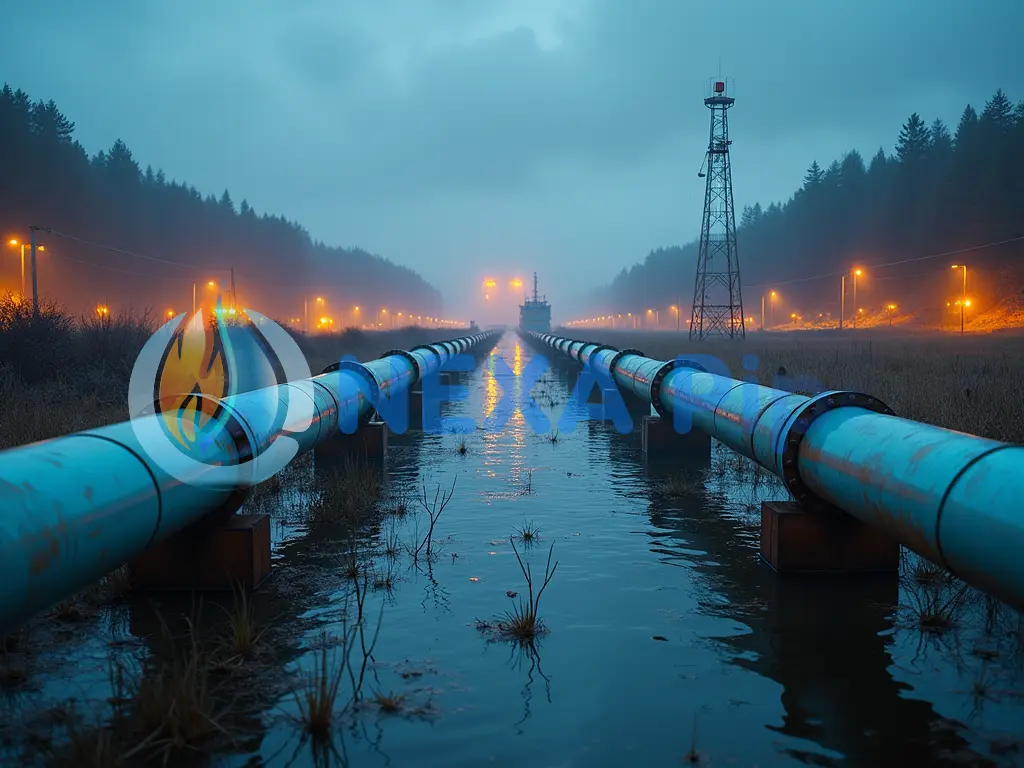
Performance Monitoring
Real-Time Analytics
Numbers don’t lie! Modern monitoring gives you the full picture: Key Performance Indicators:
- Flow efficiency
- Pressure stability
- Temperature control
- Corrosion rates
- System integrity
Predictive Maintenance
Stop problems before they start! It’s like having a crystal ball for your pipeline:
- Early warning systems
- Trend analysis
- Wear prediction
- Maintenance scheduling
- Resource optimization
Digital Integration and Smart Technologies
Welcome to the digital revolution in pipeline management! Think of your pipeline system as a smart home – but way cooler. Modern solutions pack more tech than your smartphone, and they’re changing the game entirely.
The Power of IoT in Pipeline Management
Ever wondered what your pipeline would say if it could talk? Well, now it can! Smart Features:
- Real-time data streaming
- Predictive analytics
- Remote monitoring capabilities
- Automated response systems
- AI-driven optimization
Advanced Monitoring Systems
The Digital Dashboard
Picture having a pipeline command center right at your fingertips:
| Feature | Benefit | Impact |
|---|---|---|
| Live Monitoring | Instant alerts | Faster response |
| Data Analytics | Pattern recognition | Better planning |
| Remote Control | Quick adjustments | Reduced downtime |
| Performance Tracking | Optimization opportunities | Enhanced efficiency |
Smart Sensors and Their Magic
These tiny tech warriors work 24/7 to keep your pipeline safe: Sensor Capabilities:
- Temperature fluctuations
- Pressure variations
- Chemical composition
- Flow rates
- Structural integrity
Machine Learning Integration
Predictive Power
Let’s get fancy! AI doesn’t just monitor – it thinks ahead:
- Pattern recognition
- Failure prediction
- Maintenance scheduling
- Performance optimization
- Resource allocation
The Learning Curve
Your pipeline gets smarter every day:
- Historical data analysis
- Trend identification
- Risk assessment
- Operation optimization
- Continuous improvement
Mobile Integration
Control at Your Fingertips
Running a pipeline from your phone? You bet! Mobile Features:
- Real-time alerts
- Remote control options
- Status updates
- Emergency response
- Team communication
Field Operations Revolution
Mobile tech transforms field work:
- Digital documentation
- Instant reporting
- Video diagnostics
- AR maintenance guides
- Team coordination
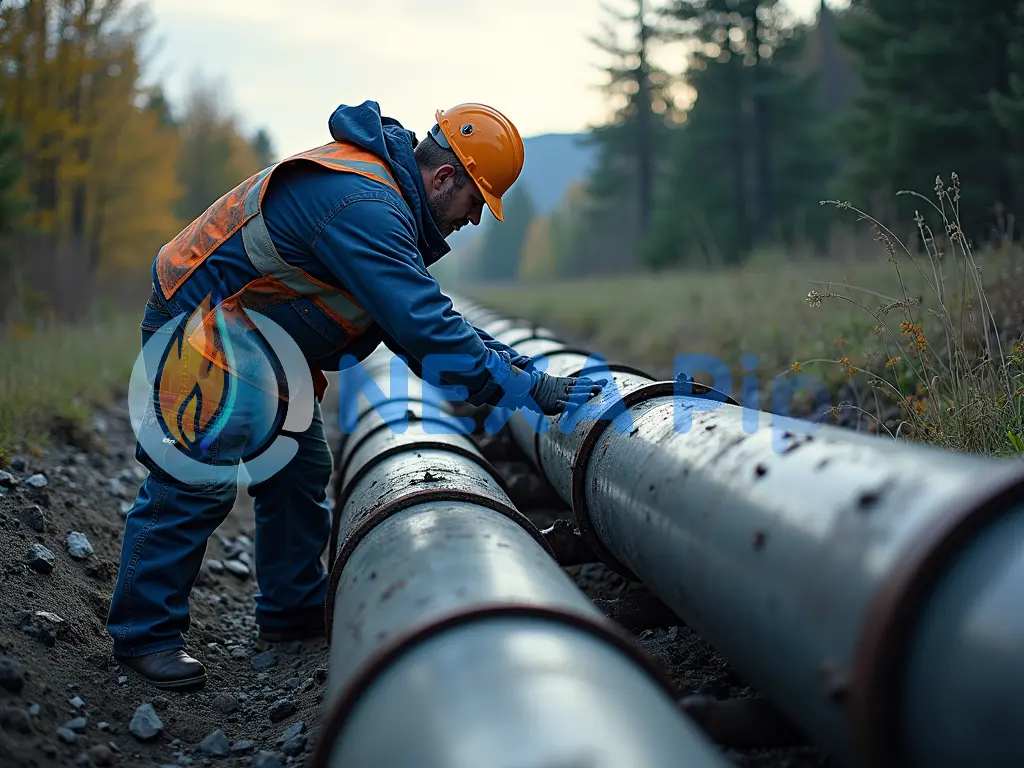
Emerging Technologies and Future Developments
Ready to peek into the crystal ball? The future of pipeline technology is more exciting than a sci-fi movie! Let’s explore what’s coming down the pipe (pun intended!).
Next-Generation Materials
Think today’s pipes are tough? Wait until you see what’s next: Revolutionary Developments:
- Self-healing coatings
- Nano-engineered surfaces
- Smart composite materials
- Biomimetic solutions
- Quantum-resistant alloys
Integration with Renewable Energy
Green Energy Compatibility
The future is green, and modern pipelines are ready:
| Energy Type | Pipeline Requirements | Solution Features |
|---|---|---|
| Hydrogen | Ultra-low permeability | Advanced materials |
| Biogas | Corrosion resistance | Special linings |
| CO2 Transport | High pressure handling | Reinforced structure |
| Geothermal | Temperature resistance | Thermal optimization |
Artificial Intelligence and Machine Learning
Smart Pipeline Networks
Your pipeline is about to get a whole lot smarter: AI Capabilities:
- Autonomous operation
- Self-optimization
- Predictive maintenance
- Risk assessment
- Resource management
Digital Twin Technology
Picture having a virtual copy of your entire pipeline system:
- Real-time simulation
- Scenario testing
- Performance optimization
- Training platform
- Decision support
Sustainability Innovations
Eco-Friendly Solutions
Going green isn’t just good PR – it’s good business:
Environmental Features:
- Zero-emission operations
- Recyclable materials
- Energy efficiency
- Water conservation
- Waste reduction
Carbon Footprint Reduction
Small changes, big impact:
- Solar-powered monitoring
- Electric maintenance vehicles
- Renewable energy integration
- Sustainable manufacturing
- Local sourcing
Industry 4.0 Integration
The Connected Pipeline
Welcome to the industrial internet of things:
- Blockchain tracking
- Cloud integration
- Edge computing
- 5G connectivity
- Quantum sensors
Making the Smart Choice: Your Path Forward
Let’s wrap this up with a bang! You’ve learned about the challenges of H₂S, explored cutting-edge solutions, and glimpsed the future. Now it’s time to put that knowledge into action.
Decision-Making Framework
Think of choosing a pipeline solution like picking a life partner – you want reliability, longevity, and no nasty surprises! Key Decision Factors:
- Initial investment value
- Long-term cost benefits
- Performance guarantees
- Support infrastructure
- Future adaptability
Implementation Roadmap
Getting Started
Ready to take the plunge? Here’s your step-by-step guide:
| Phase | Activities | Timeline |
|---|---|---|
| Assessment | Site evaluation, needs analysis | Week 1-2 |
| Planning | Resource allocation, scheduling | Week 3-4 |
| Implementation | Installation, testing | Week 5-8 |
| Optimization | Fine-tuning, training | Week 9-12 |
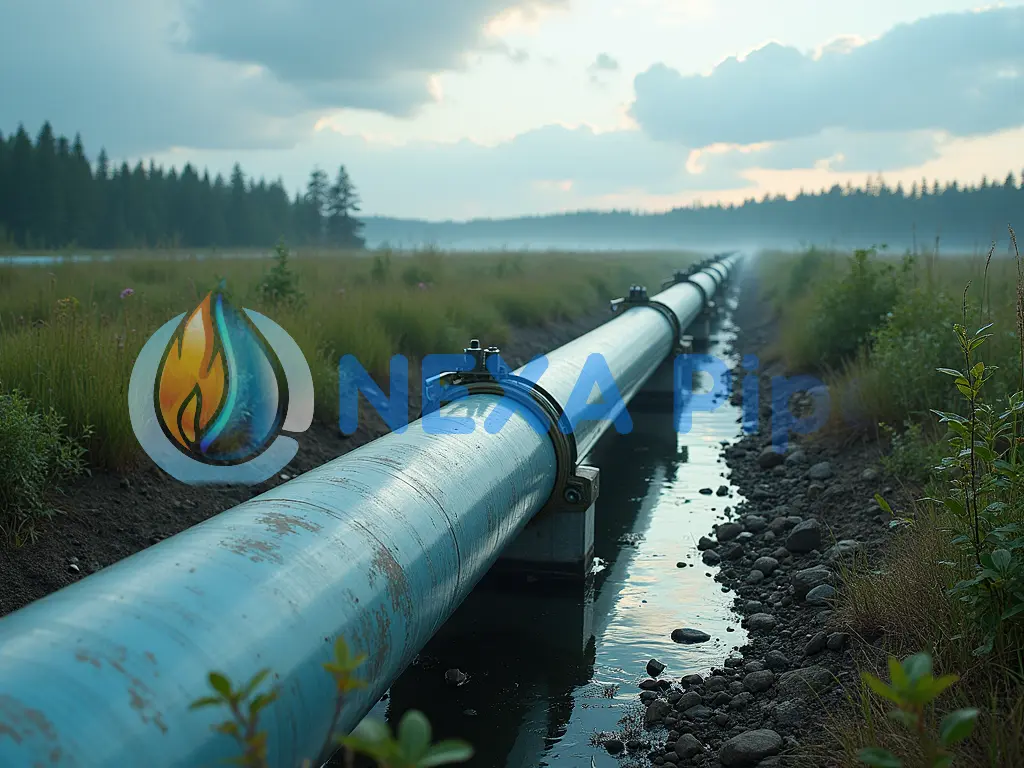
Maximizing Your Investment
Best Practices for Success
Want to get the most bang for your buck? Follow these golden rules: Optimization Strategies:
- Regular performance audits
- Staff training programs
- Preventive maintenance
- Technology updates
- Continuous monitoring
Risk Mitigation
Stay ahead of the game with smart risk management:
- Emergency response plans
- Backup systems
- Insurance coverage
- Compliance monitoring
- Regular assessments
The Competitive Edge
Market Leadership Benefits
Stand out from the crowd with:
- Superior performance metrics
- Environmental compliance
- Safety excellence
- Operational efficiency
- Future-ready infrastructure
Your Next Steps
Taking Action
Ready to revolutionize your pipeline system? Here’s what to do:
- Schedule a site assessment
- Review current challenges
- Explore solution options
- Plan implementation
- Prepare your team
Conclusion
The future of pipeline infrastructure is here, and it’s more exciting than ever. With modern solutions, you’re not just solving today’s H₂S challenges – you’re investing in tomorrow’s success. Don’t let corrosion eat away at your bottom line. Take control of your pipeline’s future today! Remember: The best time to upgrade your pipeline was yesterday. The second best time is now. Your future self will thank you for making the smart choice today.
